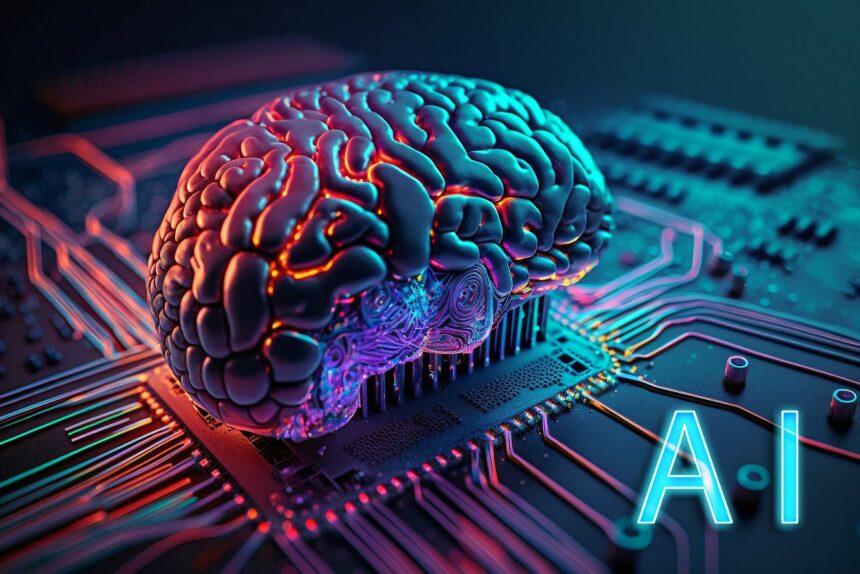In today’s rapidly evolving technological landscape, Artificial Intelligence (AI) and Machine Learning (ML) have become vital tools for businesses. Yet, these terms are often used interchangeably, leading to confusion about their distinct roles and applications. For organizations seeking to unlock the potential of business intelligence, understanding the key differences between AI and machine learning is crucial.
What is Artificial Intelligence (AI)?
Artificial Intelligence refers to the simulation of human intelligence in machines designed to think, learn, and perform tasks in a way that mimics human capabilities. AI can process vast amounts of data, make decisions, and solve complex problems without human intervention.
Applications of AI in Business Intelligence
- Automation: AI enables businesses to automate repetitive tasks, reducing operational costs and increasing efficiency.
- Data Analysis: AI-powered systems can analyze large datasets at a scale beyond human capability, helping businesses make data-driven decisions.
- Predictive Analytics: AI uses past data to predict future trends, allowing companies to stay ahead of the competition by anticipating changes in the market.
What is Machine Learning (ML)?
Machine learning is a subset of AI that involves the development of algorithms that enable machines to learn from data without being explicitly programmed. While AI encompasses the broader concept of machines mimicking human intelligence, ML focuses on the ability to learn and adapt over time.
Applications of ML in Business Intelligence
- Customer Segmentation: ML helps businesses analyze customer data to create targeted marketing campaigns based on behavior patterns.
- Fraud Detection: By continuously analyzing transaction patterns, ML algorithms can detect fraudulent activities in real time, offering enhanced security for businesses.
- Recommendation Systems: Many businesses, like e-commerce platforms and streaming services, use ML algorithms to recommend products or content based on user preferences.
AI vs. Machine Learning: The Key Differences
Though AI and ML are interconnected, it’s essential to distinguish between them. AI refers to the overarching concept of machines mimicking human intelligence, while machine learning is a specific application of AI, focused on learning and improving from data over time.
- Scope and Purpose
- AI: Aims to create systems capable of performing tasks that require human intelligence, such as problem-solving and decision-making.
- ML: Focuses on creating algorithms that allow systems to learn and adapt to new information.
- Functionality
- AI: Can involve systems that simulate human thought and behavior, such as natural language processing or robotics.
- ML: Utilizes data to identify patterns and improve decision-making over time, without being explicitly programmed to do so.
- Outcome
- AI: Emulates human-like decision-making and reasoning.
- ML: Learns from data, providing predictions or actions based on previous inputs.
How AI and Machine Learning Work Together in Business
AI and machine learning are frequently used together to create robust business intelligence solutions. AI may offer the overarching structure and logic, while machine learning fine-tunes and enhances performance by continuously learning from data.
Example in Business Intelligence
- In customer service, AI chatbots leverage machine learning algorithms to improve customer interactions. The AI system manages communication, while ML allows the chatbot to improve its responses by learning from previous conversations.
Benefits of AI and Machine Learning in Business
- Enhanced Efficiency AI and ML enable businesses to automate processes that were traditionally done by humans. This reduces the time and effort needed for various tasks, streamlining operations and boosting productivity.
- Better Decision Making Through data analysis, AI and ML provide businesses with insights that lead to more informed decisions. By utilizing these technologies, companies can forecast trends and adjust their strategies accordingly.
- Cost Reduction Automating repetitive tasks and processes with AI reduces labor costs, while ML helps businesses minimize errors and improve operational accuracy, contributing to lower overall costs.
- Personalized Customer Experience Both AI and ML allow businesses to personalize their customer interactions. ML algorithms, for example, enable the creation of individualized product recommendations based on customer behavior, boosting customer satisfaction and sales.
Future of AI and Machine Learning in Business
As businesses increasingly adopt AI and ML, these technologies will continue to evolve, offering even more advanced capabilities. Companies that leverage AI and machine learning for business intelligence will have a significant competitive advantage.
The future of AI and machine learning in business will likely include:
- Advanced Predictive Analytics: As ML models improve, businesses will be able to make more accurate predictions regarding market trends and customer behaviors.
- Smarter Automation: AI will continue to automate increasingly complex tasks, freeing up human workers for more creative and strategic roles.
- Improved Personalization: With AI-driven personalization, businesses will offer more tailored products and services, enhancing customer satisfaction and loyalty.
Conclusion
Understanding the differences between AI and machine learning is essential for businesses looking to incorporate these technologies into their strategies. While AI provides the framework for machines to simulate human behavior, machine learning allows these systems to improve over time. Together, AI and ML offer powerful tools that can drive innovation, enhance business intelligence, and improve decision-making.
For more information on how AI and machine learning can revolutionize your business, visit Sloancode Technology Group.
Author Information
Article contributed by:
SEO Specialist Kowser
Need SEO services? Book me on
𝓕𝓲𝓿𝓮𝓻𝓻 🔥🔥
Visit My Website? Adfix Agency ✅🔰







